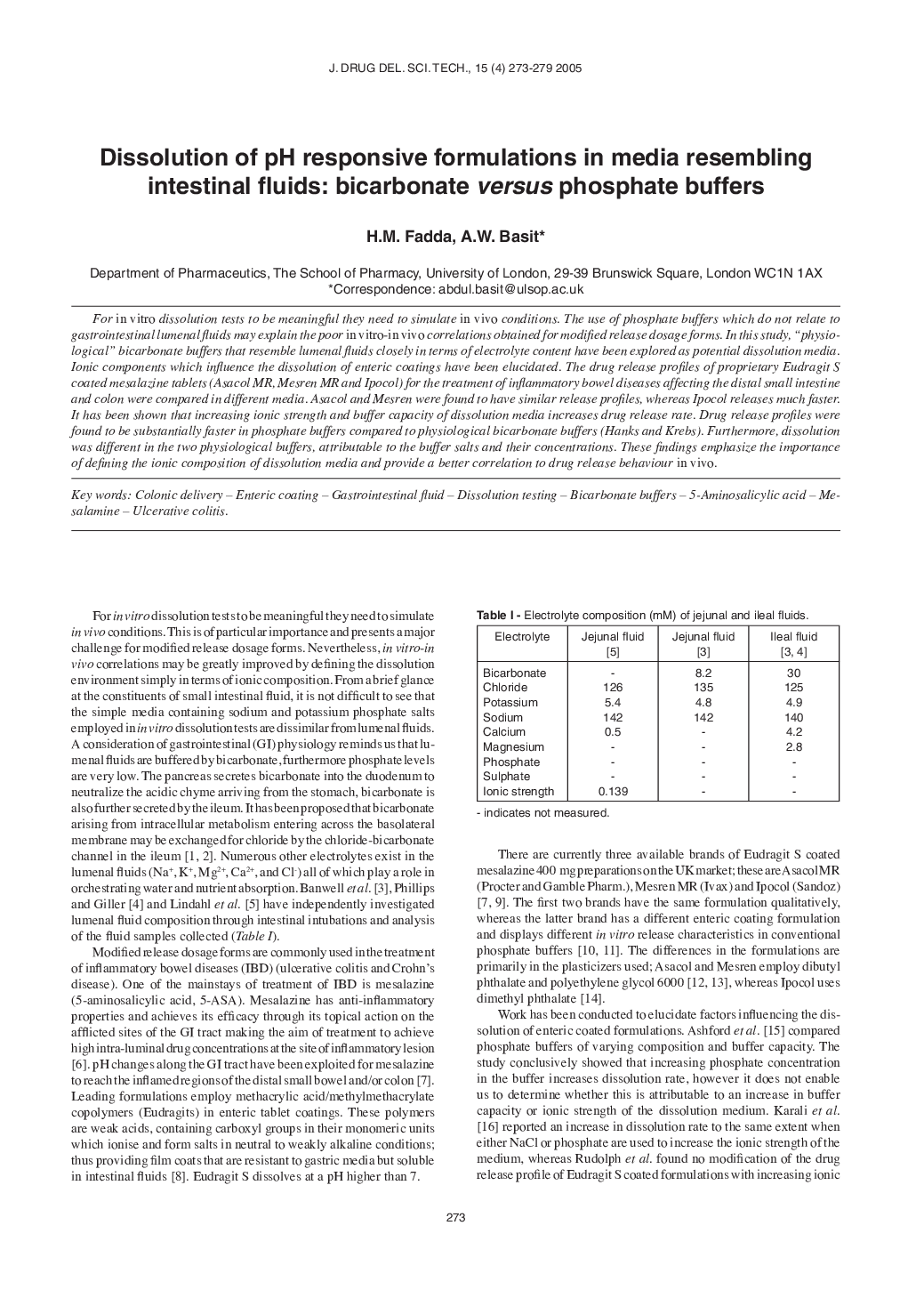| Article ID | Journal | Published Year | Pages | File Type |
|---|---|---|---|---|
| 8994243 | Journal of Drug Delivery Science and Technology | 2005 | 7 Pages |
Abstract
For in vitro dissolution tests to be meaningful they need to simulate in vivo conditions. The use of phosphate buffers which do not relate to gastrointestinal lumenal fluids may explain the poor in vitro-in vivo correlations obtained for modified release dosage forms. In this study, “physiological” bicarbonate buffers that resemble lumenal fluids closely in terms of electrolyte content have been explored as potential dissolution media. Ionic components which influence the dissolution of enteric coatings have been elucidated. The drug release profiles of proprietary Eudragit S coated mesalazine tablets (Asacol MR, Mesren MR and Ipocol) for the treatment of inflammatory bowel diseases affecting the distal small intestine and colon were compared in different media. Asacol and Mesren were found to have similar release profiles, whereas Ipocol releases much faster. It has been shown that increasing ionic strength and buffer capacity of dissolution media increases drug release rate. Drug release profiles were found to be substantially faster in phosphate buffers compared to physiological bicarbonate buffers (Hanks and Krebs). Furthermore, dissolution was different in the two physiological buffers, attributable to the buffer salts and their concentrations. These findings emphasize the importance of defining the ionic composition of dissolution media and provide a better correlation to drug release behaviour in vivo.
Keywords
Related Topics
Health Sciences
Pharmacology, Toxicology and Pharmaceutical Science
Drug Discovery
Authors
H.M. Fadda, A.W. Basit,
